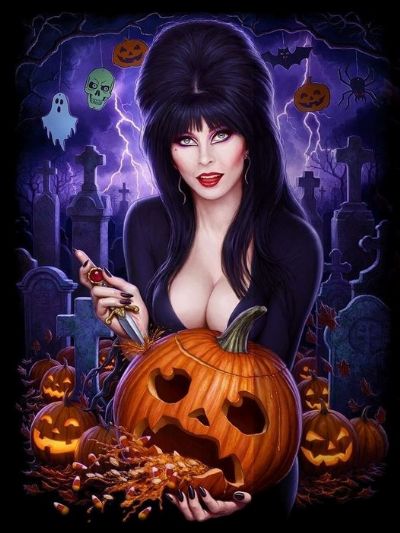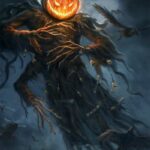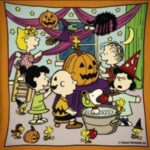The carved jack-o’-lantern, lit by a candle inside, is one of Halloween’s most prominent symbols. Many families that celebrate Halloween carve a pumpkin into a frightening or comical face and place it on their home’s doorstep after dark.

Although there is a tradition in the British Isles of carving a lantern from a rutabaga, mangelwurzel, or turnip, the practice was first named and associated with Halloween in North America, where the pumpkin was available, and much larger and easier to carve. In 1837 Jack-o’-lantern appeared as a term for a carved vegetable lantern in America but was not specifically with Halloween until 1866.
A pumpkin is a fruit and is a member of the gourd family (Cucurbitacae), which also includes squash, cucumbers, gherkins, and melons. Strange as it may seem, the carved pumpkin was associated with the harvest season in general, long before it became an emblem of Halloween. The poet John Greenleaf Whittier, who was born in 1807, wrote in “The Pumpkin” (1850):
Jack-o’-lantern
Oh!—fruit loved of boyhood!—the old days recalling,
When wood-grapes were purpling and brown nuts were falling!
When wild, ugly faces we carved in its skin,
Glaring out through the dark with a candle within!
Despite the colorful legends, the term jack-o’-lantern originally meant a night watchman, or man with a lantern, with the earliest known use in the mid-17th century; and later, meaning an ignis fatuus or will-o’-the-wisp.
Originally the Irish and Scottish would carve out turnips, potatoes or beets as lanterns with faces representing demons and place them into windows or near doors to frighten away Stingy Jack and other wandering evil spirits.
It was said that if a demon or such were to encounter something as fiendish looking as themselves that they’d run away in terror, thus sparing the houses dwellers from the ravages of dark entities. Immigrants from these countries brought the jack o’lantern tradition with them when they came to the United States.
They soon found that pumpkins, a fruit native to America, make perfect jack o’lanterns. Pumpkins seemed to be a suitable substitute for the turnips and pumpkins have been an essential part of Halloween celebrations ever since.
Jack-o-lanterns alone bring in significant revenue for businesses. In 2018, US consumers spent approximately $575.26 million on pumpkins during the Halloween season. Overall sales are projected to reach $10.5 billion this year.








